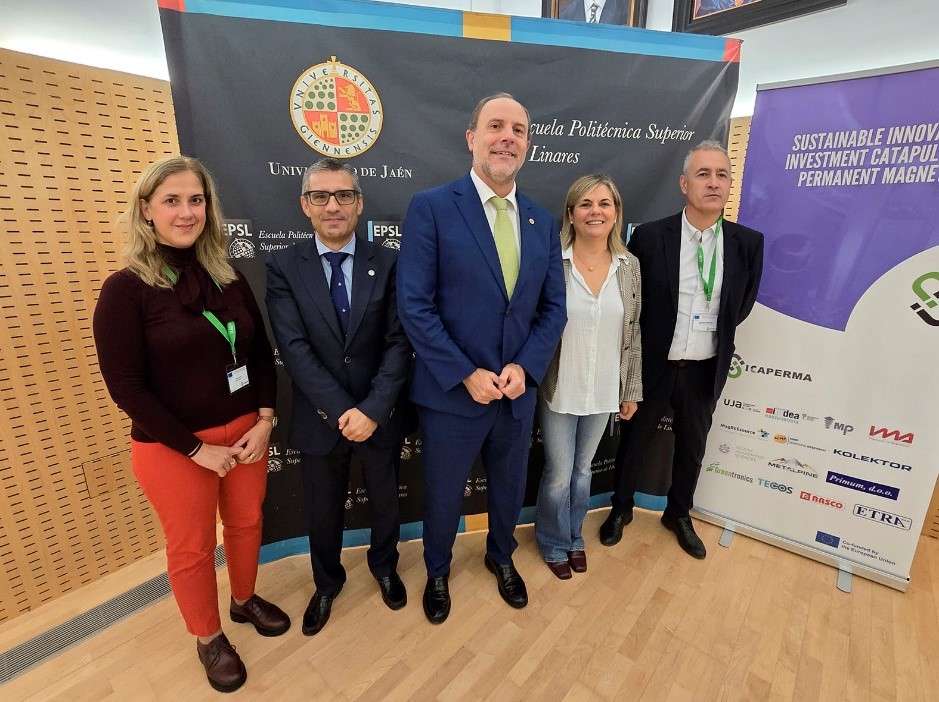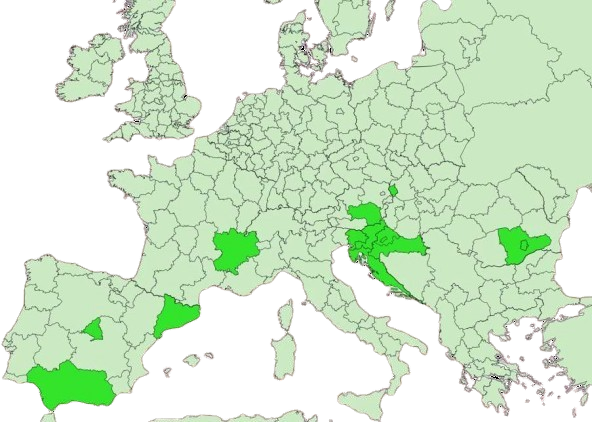The project SICAPERMA kicks-off with an objective: driving permanent magnet recycling in Europe’s less developed regions

The project SICAPERMA will focus on the specialisation area where Less Developed Regions can become leaders in Europe’s resilience: permanent magnet recycling technologies
The consortium is composed by 14 partners from 7 EU countries: Spain, France, Romania, Slovenia, Slovakia, Austria and Croatia.
The project has a total budget of € 6.25 million and will be co-financed by the European Union’s Interregional Innovation Investments (I3).
Madrid, 11th November, 2024. The project SICAPERMA has kicked-off with a hybrid which took place on the 15-16th October. This two-day event marks the official launch of the project, bringing together key project partners, stakeholders and experts in the field at the premises of Universidad de Jaén. The event served to outline the project's goals, define the roadmap for its execution, and foster collaboration among all involved parties.
SICAPERMA “Sustainable Innovation investment CAtapult for PERmanent MAgnets“ is a project that aims to push forward permanent magnet recycling in Europe, a technological specialization where less developed regions can become leaders. The project, of 30 months duration, counts on a budget of € 6.25 million and will be co-funded by the European Union’s Interregional Innovation Investments (I3). The consortium of SICAPERMA is composed of 14 academic and industrial partners from 7 different European countries: Spain, France, Romania, Slovenia, Slovakia, Austria and Croatia. The project is coordinated from Universidad de Jaén (Spain). The partnership covers the entire recycling process, connecting supply and demand while integrating the essential technological capabilities to drive innovations forward.

Permanent magnet recycling is considered the first technological area critical to leading EU value chains where less developed and transition regions can become leaders. SICAPERMA will build a tech-based value chain that does currently not exist in Europe and will do so by tapping into less developed regions’ uncovered technological capabilities. The action will accelerate the deployment and replication of advanced, innovative (TRL6+) green technologies across Europe regions, aligned with the ecological transition and resilience agendas. The ultimate goal is to promote leadership in the ecological transition through Nd-Fe-B PM recycling and the power of technologies connected.
To that end, SICAPERMA will implement 3 collaborative demonstration pilots reaching market scale. These will be focused on demonstrating (1) multi-stream permanent magnet dismantling and processing; (2) innovative sintered and bonded permanent magnet production from recycled material and (3) innovative integration of recycled magnets in strategic Europe applications (motors, etc.). These will be connected for the first time into a full interregional European demonstration ecosystem that will commercialize and deploy innovative recycled permanent magnets and underlying tech at high-end material market volume.
Among the objectives of the project, it is expected that SICAPERMA will contribute to reduce dependence of Europe on imports of permanent magnets, currently 98% of the European Union supplies originate in China. Also, the project is expected to reduce CO2 emissions saving 95 million tons by 2050 while it could generate near 5,900 jobs and achieve € 1.8 billion in revenues within 2.5 years.
SICAPERMA is aligned with the 2023 Critical Raw Materials Act and supportive of the EU resilience strategy. SICAPERMA partners are also involved with the European Raw Materials Alliance roadmap and in particular with its Rare Earth Magnets and Motors Cluster.
Efforts to improve sustainable development of critical raw materials will develop the EU value chain for Permanent Magnets. SICAPERMA will naturally position itself along the Strategic Implementation Plan of the European Innovation Partnership on Raw Materials and its Action Plan on Critical Raw Materials as well as the Raw Materials Initiative and its Roadmap 2050.
More information
- www.sicaperma.eu
- In social media:
- Twitter, Facebook & Instagram: @sicapermagnet
- https://www.linkedin.com/in/sicaperma-54186a32a/
- Contact
Sebastián García Galán.
Universidad de Jaén.
Project coordinator
sgalan@ujaen.es
IMDEA Nanociencia Dissemination and Communication Office
divulgacion.nanociencia@imdea.org
- Source: IMDEA Nanociencia Outreach Office.
